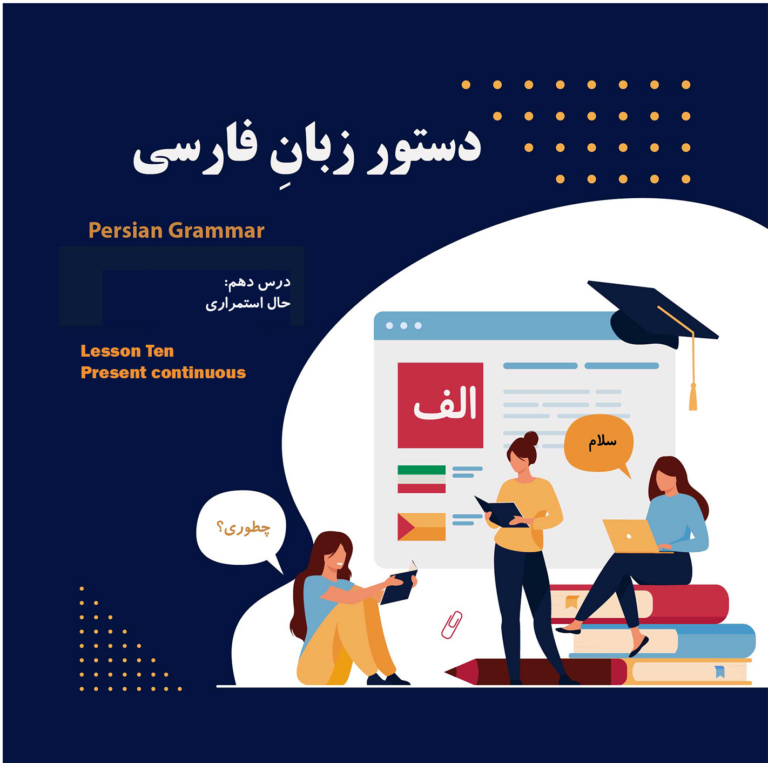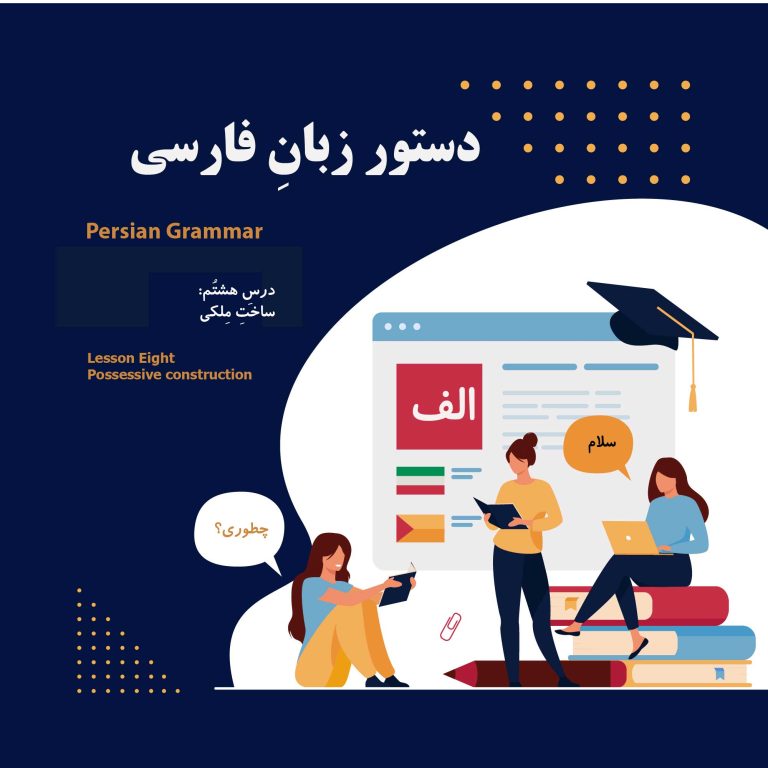Persian Grammar
Persian, also called Farsi, is a language that belongs to the Indo-European family, and is spoken by about 110 million people in Iran, Afghanistan, Tajikistan, and other regions. Persian has a rich and ancient literary tradition, dating back to the 6th century BC. Persian grammar is the set of rules that govern how words and sentences are formed and used in the language. Here are some of the main features of Persian grammar:
Features of Persian Grammar
• Persian word order:
The language is a subject-object-verb (SOV) language. It means that the typical word order in a sentence is subject plus object plus verb. For example, the sentence “I saw the blue book” would be “کتاب آبی را دیدم” (ketâb-e âbi râ didam), literally “book blue (accusative marker) saw-I”. However, Persian also allows some flexibility in word order, especially for emphasis or stylistic reasons.
• Agreement in Persian language
Farsi language doesn’t differentiate gender. Instead, gender is indicated by the agreement of verbs and pronouns with their subjects or objects. For example, the verb “to be” has different forms for masculine and feminine subjects: “او مرد است” (u mard ast) means “he is a man”, while “او زن است” (u zan ast) means “she is a woman”. Similarly, the personal pronouns for “he” and “she” are different: “او” (u) for masculine and “اون” (un) for feminine.
• Numbers in Persian nouns
Persian language has two grammatical numbers, singular and plural. Nouns, verbs, adjectives, and pronouns take different number markers. The most common way to form the plural of a noun is to add the suffix “-ها” (-hâ) to the singular form. For example, the plural of “کتاب” (ketâb), meaning “book”, is “کتابها” (ketâb-hâ), meaning “books”. However, some nouns have irregular plural forms that change their stem or vowel. For example, the plural of “دست” (dast), meaning “hand”, is “دستان” (dastân), meaning “hands”. Verbs and adjectives also agree in number with their subjects or objects. For example, the verb “to see” has different forms for singular and plural subjects: “من دیدم” (man didam) means “I saw”, while “ما دیدیم” (mâ didim) means “we saw”.
• Grammatical case in Persian language
This language has six grammatical cases. These cases indicate the function of a noun phrase in a sentence. Prepositions or suffixes that attach to the noun phrase mark these cases. The six cases are: nominative, genitive, accusative, dative, ablative, and locative. For example, the noun phrase “کتاب آبی” (ketâb-e âbi), meaning “the blue book”, can have different case markers depending on its role in a sentence:
• Nominative: کتاب آبی روی میز است (ketâb-e âbi ru-ye miz ast), meaning “the blue book is on the table”.
• Genitive: صفحه اول کتاب آبی (safhe-ye avval-e ketâb-e âbi), meaning “the first page of the blue book”.
• Accusative: من کتاب آبی را خواندم (man ketâb-e âbi râ xândam), meaning “I read the blue book”.
• Dative: من کتاب آبی را به تو دادم (man ketâb-e âbi râ be to dâdam), meaning “I gave you the blue book”.
• Ablative: من از کتاب آبی چیزی یاد گرفتم (man az ketâb-e âbi cizi yâd gereftam), meaning “I learned something from the blue book”.
• Locative: من در کتاب آبی چیزی خواندم (man dar ketâb-e âbi cizi xândam), meaning “I read something in the blue book”.
• Grammatical mood in Persian language
Persian has three grammatical moods. Moods are the attitude of the speaker towards the action or state of the verb. The moods are: indicative, subjunctive, and imperative. The indicative mood states facts, opinions, or questions. The subjunctive mood expresses wishes, possibilities, or conditions. The imperative mood gives commands, requests, or advice. For example, the verb “to see” has different forms for different moods: “من دیدم” (man didam) is indicative, meaning “I saw”; “من ببینم” (man bebinam) is subjunctive, meaning “I may see” or “let me see”; and “ببین” (bebin) is imperative, meaning “see” or “look”.
• Grammatical aspects in Persian language
Persian has four grammatical aspects. Aspect indicates the temporal structure of an action or state expressed by the verb. The aspects are: perfective, imperfective, progressive, and perfect. The perfective aspect is used to express a completed action or state in the past, present, or future. The imperfective aspect is used to express an ongoing, habitual, or repeated action or state in the past, present, or future. The progressive aspect is used to express an action or state that is in progress at a specific point in time in the past, present, or future. The perfect aspect is used to express an action or state that has a result or consequence in the past, present, or future. For example, the verb “to see” has different forms for different aspects: “من دیدم” (man didam) is perfective, meaning “I saw”; “من میبینم” (man mibinam) is imperfective, meaning “I see” or “I am seeing”; “من دارم میبینم” (man dâram mibinam) is progressive, meaning “I am seeing”; and “من دیدهام” (man dide-am) is perfect, meaning “I have seen”.
• Tense in Persian language
Persian has three grammatical tenses, which indicate the time of an action or state expressed by the verb. The tenses are: past, present, and future. The past tense is used to express an action or state that occurred before the time of speaking or writing. The present tense expresses an action or state that occurs at the time of speaking or writing. The future tense is used to express an action or state that will occur after the time of speaking or writing. For example, the verb “to see” has different forms for different tenses: “من دیدم” (man didam) is past tense, meaning “I saw”; “من میبینم” (man mibinam) is present tense, meaning “I see” or “I am seeing”; and “من خواهم دید” (man xâham did) is future tense, meaning “I will see”.







